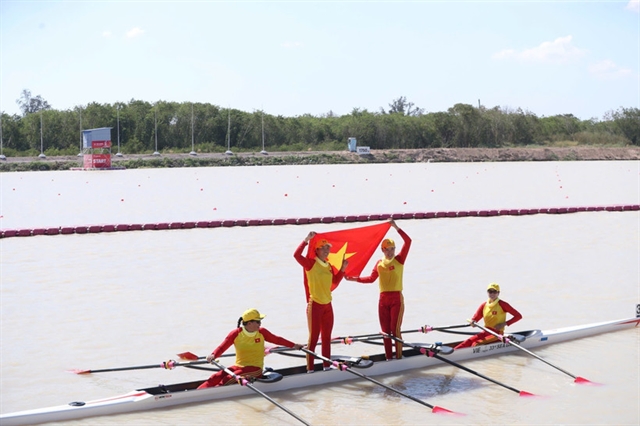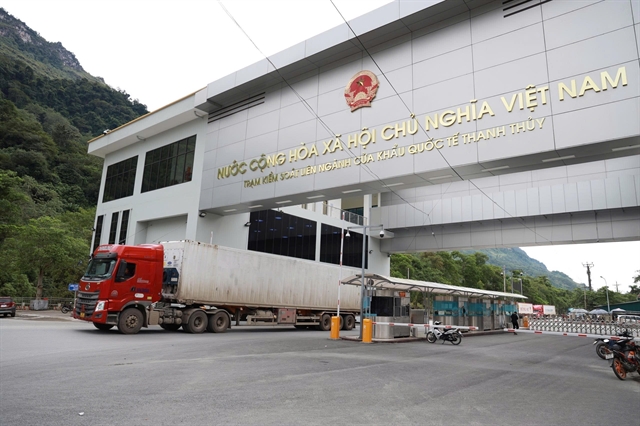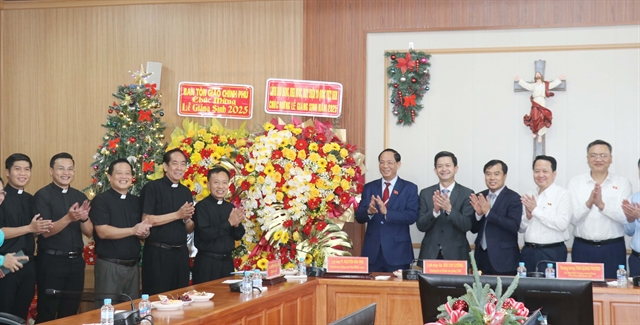 Politics & Law
Politics & Law
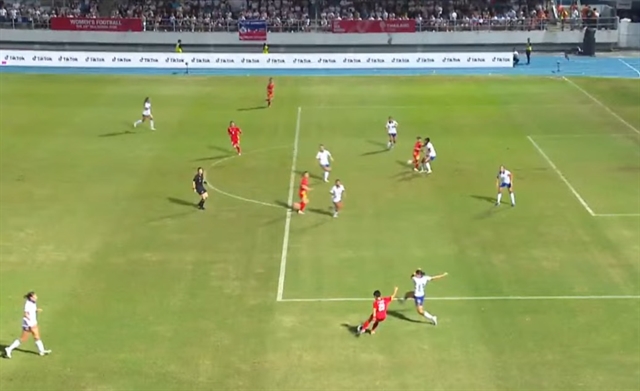
Deputy prime ministers and ministers were answering questions put to them yesterday by the country’s lawmakers on issues including agricultural restructuring, cultural activity management and tourism quality enhancement.
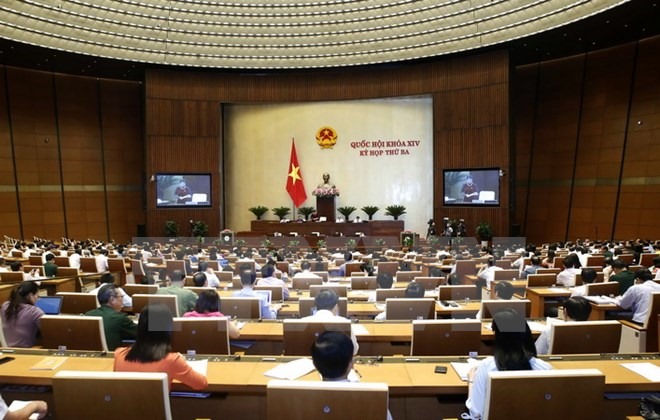 |
| Dealing with agricultural restructuring at the beginning of a three day question-and-answer session at the National Asssembly, cabinet members conceded that the Government had not done enough to manage problems of supply and demand. — VNS/VNS Photo Văn Điệp |
HÀ NỘI —Dealing with agricultural restructuring at the beginning of a three day question-and-answer session at the National Asssembly, cabinet members conceded that the Government had not done enough to manage problems of supply and demand.
Deputy prime ministers and ministers were answering questions put to them yesterday by the country’s lawmakers on issues including agricultural restructuring, cultural activity management and tourism quality enhancement. The next two days’ agenda will also cover healthcare and medicine price controls, and use and management of resources for socio-economic development.
Speaking at the opening ceremony, NA chairwoman Nguyễn Thi Kim Ngân said the legislature’s Standing Committee had received 98 questions for the Prime Minister, Government, Chief Judge of the People’s Supreme Court and Head of the People’s Supreme Procuracy.
 |
| Minister of Agriculture and Rural Development (MARD) Nguyễn Xuân Cường. — VNA/VNS Photo Phương Hoa |
’Bumber crops, price drops’
The questions put to Minister of Agriculture and Rural Development (MARD) Nguyễn Xuân Cường yesterday focused on a roap map for restructuring the agriculture sector, measures to enhance competitiveness of agro-products and expand markets with an aim to build a commodity agricultural production and sustainable development.
Answering a question by Tôn Ngọc Hạnh, deputy of southern Bình Phước Province, about agro product market, and high-tech agriculture production, the minister said that at present the situation of “the more bumper crops, the more price drops” was due to weak organisation of the consumption market.
The agriculture sector had done well in production but processing and marketing were still weak, resulting in oversupply, said the minister.
Việt Nam’s agriculture sector was of a small scale, with low productivity and vulnerable to climate change and international integration, the minister admitted.
Pork glut
Deputy Nguyễn Sơn from Hà Tĩnh Province raised a question about plans for animal breeding. Sơn referred to the glut of pigs that caused severe losses to breeders. Sharing Sơn’s view, deputy Nguyễn Thị Ngọc Lan from Bắc Ninh asked about measures to help farmers cope with oversupply.
Minister Cường explained that there were two main reasons for the problem. The first was that production developed too fast. For the past ten years, pork meat yield increased dramatically while people’s nutrition had changed and pork consumption dropped, resulting in oversupply.
The second reason was weak co-operation between production and processing. At present, processed products account for 20 per cent, said the minister. At present, Việt Nam has just exported pigs to three countries with a total volume of 20,000 tonnes of suckling pigs a year.
Deputy Nguyễn Thanh Hồng was not satisfied saying the answers did not address the issue of State management in response to rapidly changing market conditions. “The Minister said ‘producers must be wise’ but people need ‘wise managers,’’ he said.
After the MARD minister’s session, deputy Prime Minister Trịnh Đình Dũng spoke to the NA about measures to increase competitiveness of Vietnamese agro-products. Dũng admitted that the situation of “bumper crops but price drops” was due to weak planning in the agriculture sector. “It was the responsibility of State management,” he said.
Weak management
Agriculture planning was not matched with specific production capability and market demands, the deputy PM said.
Agricultural production had many shortcomings. Small-scale production made it hard to apply high technologies. The processing industry had not caught up with the speed of production, and the branding for made-in-Việt Nam products was insufficient.
The deputy PM also pointed to weakness of State management, including policies which had not followed rapid market changes.
To effectively restructure the sector, the deputy PM said a master plan was needed to increase competitiveness and speed up consumption so as to promote a sustainable development. The first step is to complete mechanisms and policies to create favourable conditions for farmers and businesses to equally and transparently access land, credit and technological resources, Dũng said.
Minister of Industry and Trade helped explain technical problems hindering the export of farm products and suggested measures to address these issues.
The Q&A sessions also examined the issues of land management, forest and water resources protection, management of pesticides and fertilisers, branding, processing technology, storage, and attracting investment in agriculture.
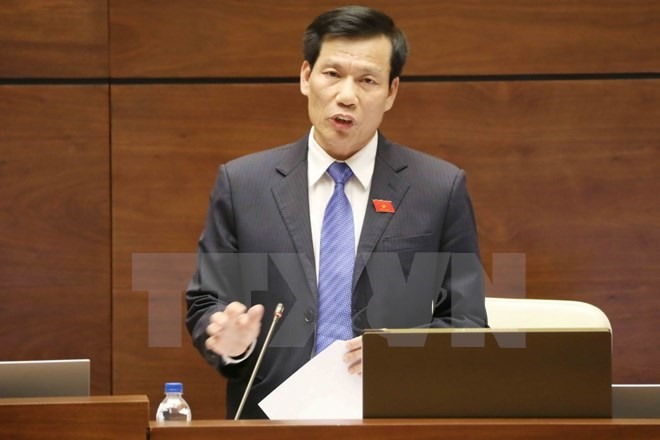 |
| Minister of Culture, Sports and Tourism Nguyễn Ngọc Thiện. — VNA/VNS Photo Phương Hoa |
Tourism concerns
In the afternoon session, members of the National Assembly questioned Minister of Culture, Sports and Tourism Nguyễn Ngọc Thiện over the management and certification of cultural activities, the management of sports and cultural projects, the organisation of festivals, and solutions to improve the competitiveness of Việt Nam’s tourism.
Responding to questions by delegate Nguyễn Ngọc Phương, a deputy from central Quảng Bình Province, on the operation of unlicensed tour guides in some tourist spots and the degradation of a number of historical sites, Thiện said that a number of tour guides had been caught working without licences in Khánh Hòa, Đà Nẵng and Quảng Ninh over the past few months.
He blamed the problem on a spike in international tourists from markets with unpopular languages.
To solve the issue, the ministry has tightened the granting of licences and issued strict punishments to tour companies involved, as well as strengthening the training of tour guides.
Regarding historical relic conservation work, he said that there were about 3,300 national relics nationwide. Most of them were made out of wood, so a lot of funding was needed for preservation activities.
From 2011 to 2015 there was a national programme on culture, including restoration. Although the capital allocation was limited, it was enough for the restoration of relics, including intangible ones.
However, the conservation effort faced obstacles due to a lack of funding since 2016, he said, adding that calling for investment from the private sector was a good option.
Answering a question from Nguyễn Thị Kim Thúy, a deputy from Đà Nẵng, on the plan for developing Sơn Trà Peninsula into a national tourism site and the construction of up to 1,600 guest rooms on the peninsula, Thiện said the planning for Sơn Trà was based on Resolution No. 33 of the Politburo and the Strategic Plan for the Development of Southern Tourism with a Vision to 2030.
The ministry had developed the plan in 2014 and submitted it to the Government for approval in 2016. During the implementation, the ministry would work closely with Đà Nẵng and receive comments from other relevant ministries such as the Ministry of Defence, Ministry of Construction and Ministry of Planning and Investment.
The plan focuses on developing high-quality eco-tourism products, preserving biodiversity while ensuring security and national defense. Prior to the planning phase, the city had approved investment for 11 tourism projects, with over 5,049 guest rooms. The number of guest room was reduced from over 5,000 to 1,600 rooms by experts during the planning process.
The ministry’s priorities for the project were sustainable development, responsible construction and a focus on conservation, Thiện said. Accordingly, the number of guest rooms to be built on the peninsula would be reduced depending on circumstances.
Deputy Prime Minister Vũ Đức Đam clarified the issues raised by NA deputy Thúy by saying that Sơn Trà peninsula tourism planning is based on the Law on Tourism. Accordingly, the Prime Minister approved the national tourism master plan, including the areas likely to have national tourism sites. Đà Nẵng has two national tourist areas namely Sơn Trà and Bà Nà. The master plan was developed at the end of 2013, submitted for approval at the end of 2016 and recently announced in Đà Nẵng.
The issues regarding Sơn Trà did not only concern NA deputies but also the common local people, he said.
Even though the planning had been made with due consideration for both development and conservation, “as soon as there was an opinion from the Đà Nẵng Tourism Association about the plan, the Prime Minister and I asked city authorities to consider public opinion and the thoughts of scientists,” Đam said.
He said he had requested city leaders to review the plan on the grounds of sustainable development, and local authorities were asked to ensure local consensus before implementing projects.
In response to a question raised by Cao Thị Xuân, a NA deputy from north central Thanh Hóa Province on issues relating to the capacity of staff working in cultural management, Thiện attributed the low competence of staff to recent incidents in arts and performance sectors.
He affirmed that such incidents would not occurr unless cadres were competent.
He cited the ban on 5 songs composed before 1975, and the listing of more than 300 popular songs as being "permitted" on the art and performance agency’s website.
"As a head of the ministry, I take responsibility for all incidents," said Thiện.
The head of the Culture, Sports and Tourism Ministry said the ministry reviewed the responsibilities of concerned parties and adopted measures to improve the capacity of staff as well as change their positions if necessary, he said. — VNS

